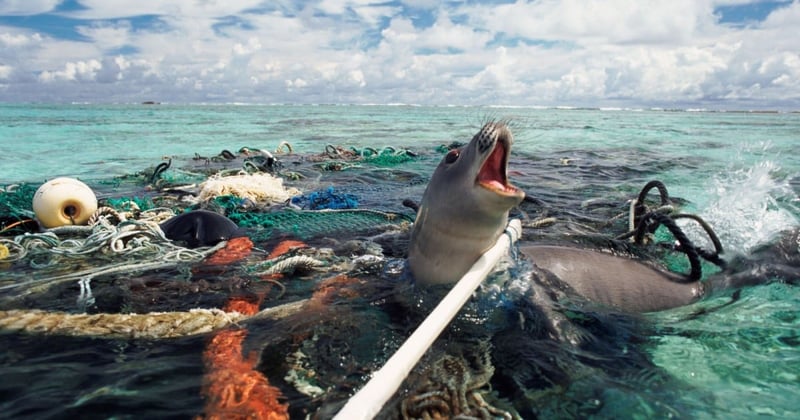
Ghost gear haunting animals in our oceans
News
Ghost gear is a term for lost and abandoned fishing nets that circle the seas entangling, injuring and killing precious marine life.
The problem is massive. Globally, one tonne of new ghost fishing gear is lost or discarded in our oceans every minute [1].
Made of nylon and plastic, ghost gear takes centuries to break down and can drift in the ocean for many years trapping, injuring and killing marine animals with turtles, seals, whales, sharks and seabirds high in the death toll.
Australia has the misfortune to be home to a ghost gear hotspot in the Gulf of Carpentaria in Northern Australia. Disturbingly, the CSIRO has estimated that 5,000 to 15,000 turtles have been caught in the nets washed up on Gulf of Carpentaria beaches in the past decade [3].
Where is the ghost gear drifting into the Gulf coming from?
While half the nets can’t be identified by their source country, research shows just 4 per cent are from Australian sources. The rest come from countries such as Taiwan, Indonesia, Korea, Japan and Thailand, and includes mostly trawl, gillnets and long line fishing gear which can be many kilometres long. [4]
What causes the ghost gear?
The causes are both accidental as well as deliberate. Severe storms mean gear can be lost overboard or it gets caught up on reefs and rocks on the seafloor.
Sometimes for less expensive gear types, it will be easier and cheaper to throw the gear overboard than taking it and repairing it on shore. Often gear recovery is too difficult. There is also the serious problem of illegal fishing.
What is World Animal Protection doing?
Our “Sea Change” campaign aims to achieve measurable and sustainable change by reducing and removing the volume of fishing gear in the oceans and enabling the rescue of entangled animals.
World Animal Protection founded the Global Ghost Gear Intitiative in 2015, bringing together organisations and businesses with the power to help solve this problem worldwide. Our aim is to achieve worldwide collaboration and cooperation to prevent and recover ghost gear.
You can help protect marine life from the mess of ghost gear.
[1] Macfadyen et al (2009) “Abandoned, lost or otherwise discarded fishing gear” in UNEP regional sea’s report and studies 1985; FAO Fisheries and Aquaculture Technical Paper, No 523, Rome, pp 1;11.
[2]Kiessling, I (2003) “Finding solutions: derelict fishing gear and other marine debris in Northern Australia. Report prepared for the National Oceans Office for the Key Centre for Tropical Wildlife Management, Darwin, Australia: Charles Darwin University, p 10.
[3] Wilcox, C., Heathcote, G., Goldberg, L., Gunn, R., Peel, D. & Hardesty, B.D. (2014). Understanding the sources, drivers and impacts of abandoned, lost and discarded fishing gear in northern Australia. Conservation Biology DOI: 10.1111/cobi.12355.
[4] Gunn et al (2010) “Tackling ‘ghost nets’: Local solutions to a global issue in northern Australia”: in Ecological Management & Restoration, Vol 11, No 2 August.
Image credit: Michael Pitts / naturepl.com
Globally, one tonne of new ghost fishing gear is lost or discarded in our oceans every minute
Our work
We're working in Australia and around the world to end the needless suffering of animals by inspiring people to change animals’ lives for the better.
Our wildlife work
Around the world, wild animals are being exploited. They’re hunted down, trapped and farmed in captivity, all to be sold and abused for entertainment, medicine, fashion, pets and products.

